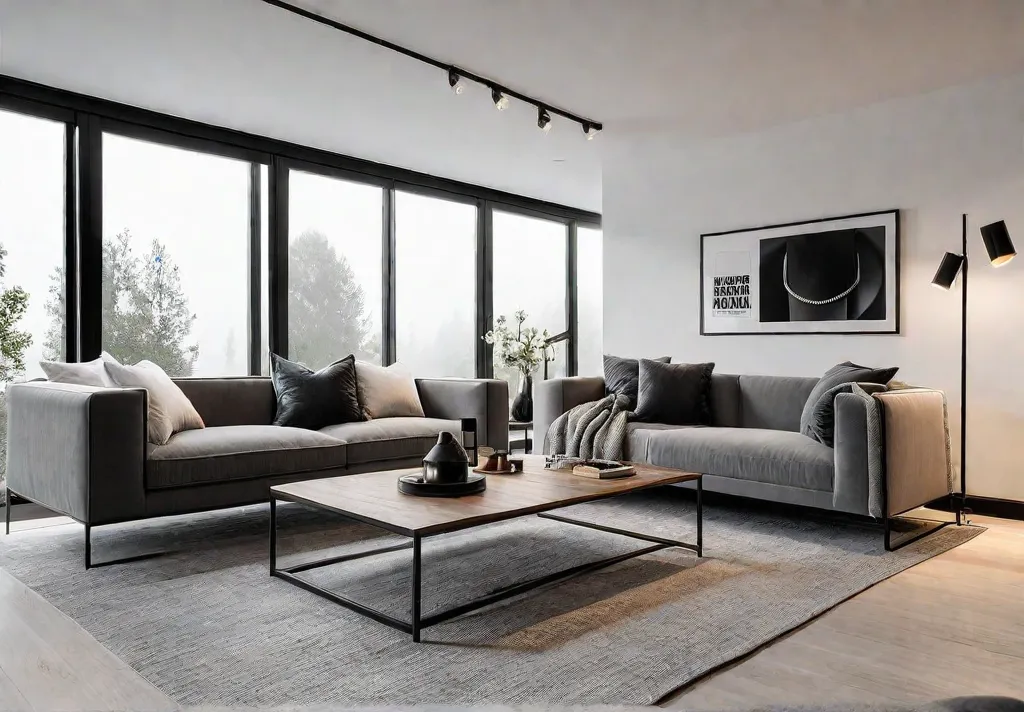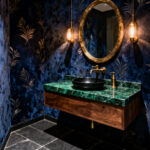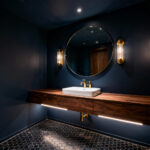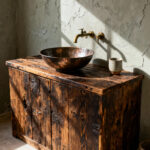As we enter 2024, the living room is poised to take center stage as the heart of our homes. This versatile space is where we gather, relax, and create lasting memories with family and friends. And with the latest design trends, there’s never been a better time to transform your living room into a stunning and functional oasis.
In this comprehensive guide, we’ll dive into the most captivating living room decor styles and innovative ideas shaping how we design our living spaces in the year ahead. Whether you’re a minimalist at heart or a maximalist who loves bold statements, there’s something here to inspire your inner designer. So, please grab a cup of coffee, get comfortable, and explore the living room decor trends that will have you reimagining your cozy retreat.

Minimalist Chic
Minimalism has been dominant in living room design for years, offering a clean, serene, modern, functional, and visually appealing aesthetic. If you want to create a minimalist living room, keep a few key elements in mind.
First and foremost, focus on clean lines and simple shapes. Steer clear of ornate or fussy decorations and opt for streamlined furniture with smooth, uncluttered silhouettes. Secondly, stick to a neutral color palette, typically white, black, gray, and beige. These calming hues will help create a sense of serenity in the space.

Functionality is also crucial in minimalist design. Choose furniture that serves a purpose without taking up unnecessary space, such as a storage ottoman or a bed with built-in drawers. And don’t forget to declutter – minimalism is all about simplicity, so remove any unnecessary items and keep only what you need or use regularly.
Incorporate natural materials like wood, stone, and linen to add warmth and texture to your minimalist living room. These elements can help balance the clean lines and neutral tones, making the space feel inviting and cozy. Use statement lighting and artwork to add visual interest without cluttering the room.
Cozy Scandinavian Style
Scandinavian design has long been admired for its ability to create warm, inviting, and functional living spaces. This design style emerged in the 1950s and has become a global movement known for its simplicity, functionality, and connection to nature.

Natural materials like wood, wool, and linen are at the heart of Scandinavian-inspired living room design. These textures add warmth and create a sense of harmony with the great outdoors. Neutral color palettes, including shades of white, gray, and beige, are also a hallmark of this style, contributing to the calming and soothing atmosphere.
Minimalist furniture is another key element, focusing on clean lines and simplicity. But what sets Scandinavian design apart is the concept of “hygge” – a Danish word that encompasses the feeling of coziness, comfort, and contentment. Incorporating hygge into your living room can be as simple as adding plush throws, layered lighting, and pops of color through textiles and accessories.

To create a cozy Scandinavian-inspired living room, consider incorporating natural textures like a wooden coffee table with a linen tablecloth and wool throw pillows. Layered lighting, including floor and table lamps, can also help establish a warm and inviting ambiance. Don’t be afraid to add a few bold accents, such as a vibrant rug or colorful artwork, to add personality to the space.
Maximalist Opulence
In contrast to the minimalist and Scandinavian trends, the maximalist living room design is coming back, offering a bold and opulent aesthetic. This style embraces rich colors, patterns, and textures to create visually stunning, statement-making spaces.

Maximalism has its roots in the Art Nouveau and Art Deco movements, which celebrated ornate, decorative, and extravagant design. To achieve this look in your living room, incorporate bold, vibrant colors like jewel tones and deep hues. Patterned wallpapers, textiles, and area rugs can also add depth and visual interest to the space.
When it comes to maximalist design, layering is key. Mix and match different textures like velvet, leather, and metallic accents to create a sense of luxury and opulence. Remember to balance the bold, statement pieces with more neutral, grounding elements, such as using a neutral color palette as a backdrop or incorporating clean-lined furniture to anchor the space.

To make the most of maximalist design, choose a bold, statement piece, like a colorful artwork or a patterned rug, to serve as the room’s focal point. Then, layer accessories, such as throw pillows, blankets, and decorative objects, to add depth and personality. Mixing and matching patterns and textures can create a truly dynamic and visually engaging living room.
Earthy Boho Chic
The boho-chic aesthetic continues to be a popular trend in living room design. This style offers a laid-back, eclectic, and nature-inspired look. It embraces natural materials, global influences, and a mix of vintage and modern elements.

Regarding boho-chic living room design, natural materials like rattan, macrame, and jute are the show’s stars. These textures not only add warmth and character but also create a connection to the great outdoors. Earthy color palettes and a mix of patterns and textures are key to achieving this relaxed, carefree vibe.
But boho-chic design isn’t just about the materials – it’s also about incorporating global influences and a touch of vintage flair. Look for pieces that reflect different cultural traditions, such as Moroccan-inspired textiles or Indian-inspired accessories. Repurposing vintage furniture or decor can also add a unique and personalized touch to the space.
To create a cozy and inviting boho-chic living room, start by layering soft textiles like throws, cushions, and rugs. Incorporate lush greenery in potted plants or hanging vines to bring a touch of nature indoors. Display personal items, such as photographs, artwork, or travel souvenirs, to make the space your own.

Try using a neutral color palette as a foundation when balancing the boho-chic aesthetic with a more modern and cohesive design. This will help create a sense of order and balance while allowing you to incorporate the eclectic and nature-inspired elements that define the boho-chic style.
Transitional Elegance
Transitional design has become increasingly popular in living room decor. This style offers a harmonious blend of traditional and contemporary elements, aiming to create a timeless and sophisticated space that appeals to homeowners who value both classic and modern aesthetics.

Classic furniture silhouettes with clean, modern lines are at the heart of transitional living room design. Think roll arms or tapered legs with a sleek, streamlined look. This blend of traditional and contemporary creates a sense of familiarity while still feeling fresh and up-to-date.
When it comes to color, transitional design typically features a neutral palette as the foundation, with pops of color introduced through accessories and accents. This allows for personal style to shine through without overwhelming the space. Combining natural materials like wood and stone with more contemporary elements like glass or metal adds visual interest and depth to the room.
To balance traditional and modern elements, consider layering different textures, such as velvet, linen, and wool. This can help create a cozy and inviting atmosphere while still maintaining a sense of elegance. Lighting is also an essential component, with a mix of ambient, task, and accent lighting used to highlight different areas of the room.

By incorporating versatile and timeless pieces, you can create a transitional living room that will look and feel fresh for years. Remember to choose furniture and decor that can be easily rearranged or repurposed as your style evolves, ensuring a cohesive and adaptable space.
Sustainable and Eco-Friendly Designs
As environmental consciousness grows, sustainable, eco-friendly living room design has become increasingly popular. This approach uses natural, renewable, and recycled materials to create visually appealing and functional living spaces while minimizing environmental impact.

Some key elements of sustainable living room decor include incorporating natural materials like bamboo, cork, and reclaimed wood. These materials add warmth and texture to the space and have a lower environmental footprint than traditional building materials. Opting for energy-efficient lighting and appliances is another way to reduce energy consumption and promote sustainability.
Regarding furnishings and textiles, look for pieces made from sustainable and recycled materials, such as organic cotton, recycled plastic, or even repurposed vintage items. This supports eco-friendly practices and adds a unique and personalized touch to your living room.
Incorporating natural elements in a way that complements your existing decor can help you balance sustainable design principles with your personal style preferences. For example, a reclaimed wood coffee table paired with sleek, modern seating can create a beautiful and environmentally conscious living room.

Other sustainable living room ideas include maximizing natural light, adding a vertical garden or green wall, and choosing energy-efficient smart home technology. By making small, mindful choices, you can create a living room that is both visually stunning and environmentally responsible.
Multifunctional and Flexible Spaces
As living spaces become more compact, the demand for multifunctional and flexible living room designs has increased. This trend focuses on creating versatile and adaptable spaces that can accommodate a variety of activities and changing needs.

One key element of multifunctional living room decor is the use of modular and convertible furniture. Pieces like sectional sofas and ottomans with hidden storage can be rearranged to suit different activities while also serving as additional seating or storage when needed.
Dual-purpose furniture, such as a coffee table with built-in trays or a console that can double as a dining table, is another way to maximize the functionality of your living room. These versatile pieces can help reduce clutter and create a more organized, streamlined space.
To further enhance your living room’s flexibility, consider incorporating wall-mounted shelving and storage solutions. This can help free up floor space and create a more open, airy feel.
When designing a multifunctional living room, it’s important to maintain a cohesive and visually appealing aesthetic. Incorporate color, texture, and lighting to create a harmonious and inviting atmosphere. Accessorize with decorative items that complement the overall design, and don’t be afraid to rearrange the space as your needs change.

By embracing multifunctional and flexible design elements, you can create a living room that adapts to your lifestyle and evolving needs without sacrificing style or comfort.
Technology-Integrated Living Rooms
Technology plays a significant role in our daily lives, so integrating smart home features and digital elements into living room design has become more prevalent. This trend seamlessly incorporates these technological advancements while maintaining a visually appealing and functional living space.
One key aspect of technology-integrated living room design is incorporating smart home technology, such as voice-activated assistants, automated lighting, and integrated entertainment systems. These features can enhance convenience, energy efficiency, and connectivity while seamlessly blending into the overall aesthetic of the room.

Consider incorporating hidden or discreet technology to achieve a balanced and cohesive look. This could include built-in speakers, charging stations, and smart home hubs integrated into the design rather than being visible and obtrusive.
Voice-activated assistants, like Amazon Alexa or Google Home, can also be a valuable addition to a technology-integrated living room. With simple voice commands, these devices allow you to control various aspects of your living space, from lighting and temperature to entertainment.
Additionally, integrating smart TVs and wireless charging surfaces into your living room design can further enhance the functionality and convenience of the space without compromising its visual appeal.
When incorporating technology into your living room, it’s essential to balance the digital elements and more traditional design features. By carefully selecting and positioning these technological components, you can create a living room that is both technologically advanced and aesthetically pleasing.
Conclusion
The living room decor trends of 2024 offer a diverse range of design styles and innovative ideas to inspire and transform your living space. From the clean and serene minimalist aesthetic to the bold and opulent maximalist approach, and from the eco-friendly and sustainable designs to the technology-integrated living rooms, a style suits every preference and need.

By understanding these trends and incorporating the key elements, you can create a living room that reflects your personal style and enhances your overall living experience. Embrace the versatility and creativity of these design trends to craft a living room that is both visually stunning and functionally tailored to your lifestyle.
So, whether you’re a minimalist at heart, a Scandinavian design enthusiast, or a maximalist who loves to make a statement, this ultimate guide has something for you. Start exploring these living room decor trends and get ready to transform your space into a true reflection of your unique style and personality.






